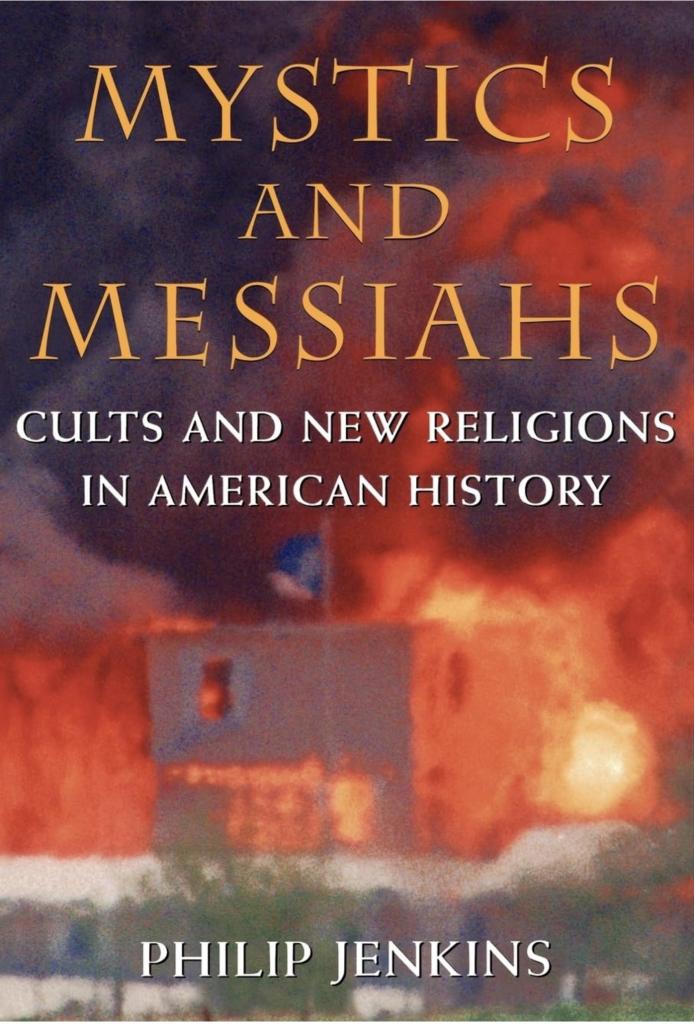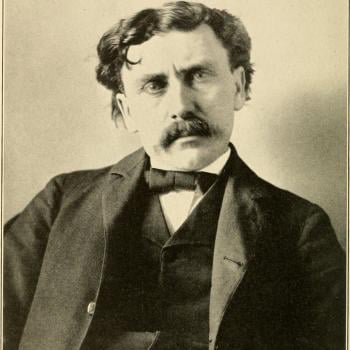Recently I described the quite extensive work I had undertaken at an earlier phase of my career on the topic of social problems – or, as we might say, of various panics and nightmares – which got me deep into themes of drugs, child abuse, serial murder, terrorism, and other sensational matters. This was really what I was known for before I turned my attention to Global Christianity and Christian History.
At this point, you might well be asking: what happened to religion in all this? Most of my later career has been centrally focused on religious themes, so was that all some kind of novelty after I finished with Social Problems? Absolutely not. If you look at the titles I have mentioned, the topic of religion runs through them inextricably. If you are interested in the history of modern American religion – say from the 1970s onward – you can learn a lot from this Social Problems approach. Put another way, I think that if you neglect those topics, and many people still do, you are really missing a core part of the story.
Some of the religious relevance is obvious enough. That is certainly true of the work on cults and new religions. But you could not study terrorism, then or since, without paying proper attention to the relationship between religion and violence, and that was a big element in my teaching as well as my research back then. I will illustrate this point with two other themes, which respectively have a profound impact on how we study very mainstream topics in American religion. One concerns the role of the Satanism Scare in shaping how we study evangelical and Pentecostal history; and next time, I will explore the significance of sexual abuse issues in American Catholic history.
Evangelicals, Pentecostals, and the Devil
In the late twentieth century, discussions of child sexual abuse involved a very sizable and surprising religious angle. As I discussed in a recent blogpost, much of the rhetoric at that time concerned ritual child abuse, Satanism, and recovered memories, and in turn much of that strongly tracked back to evangelical and Pentecostal activism. That linkage could only be understood in the context of the revivals then under way with their powerful focus on the End Times, with the attendant beliefs in Satanic and demonic powers. Also, these Satanic scares provided a wonderful way for religious activists to get their message across to mainstream media. Remember that this was the era of the Moral Majority, followed promptly by the Christian Right.
Any account of modern American cultural history – political, social, cultural, religious – has to pay full attention to that pervasive and influential Satanism Scare, which was quite unavoidable for anyone exposed to the mass media. The emerging scare was already much in evidence from the late 1970s, and it reached peak hysteria roughly in the decade after 1985. That in turn merged with the outrageous panic then in progress which alleged that children were being abducted and killed in vast numbers, likely by Satanic cults. In recent times, the wonderful first season of True Detective did a spectacular job of recapturing the paranoia of that era, and especially its focus on threats to children. (I actually spoke about that program when it was first broadcast in 2014).
In every respect, this was a full-fledged revival of the classic witchcraft panics of previous centuries. Quite ordinary mainstream people came to believe in the clandestine existence of vast cults devoted to the worship of the Devil, groups that held secret meetings marked by orgies and probably human sacrifice. The panic produced an appalling series of sensational cases, complete with mass trials, and the punishment of wholly innocent people, some of whom languished in prison for many years. On a far less damaging level, churches led national campaigns against the celebration of Halloween.
Although later evangelicals and Pentecostals have largely forgotten this association, their campaigns were a central and fundamental component of that whole Satanism Scare. If you walked into an evangelical bookstore back in the day (and they were very common), you encountered whole walls of titles about ritual abuse, Satanism, cult menaces, the evils of Halloween, Satanic rock and roll, Satanic serial killers and ritual murder … All in a strip mall near you.
On these shelves, you could read any number of the alleged “memoirs” written by various frauds, confidence-tricksters, and simply delusional folks who claimed to record their experiences in Satanic cults, which were commonly portrayed as vast, homicidal, and extremely dangerous. Generally, these “exposers” and survivors portrayed themselves as having been very important figures in those movements, which made their subsequent conversion to evangelical faith seem all the more impressive. Some memoirs were purportedly the work of “breeders,” women who had allegedly borne children for the sole purpose of sacrificing them in cult rituals.
One very visible example in this tradition was the so-called “Lauren Stratford,” who told literally insane tales of her history in Satanic movements. After her lies were exposed, she dropped out of sight for a while before resurfacing as an alleged (and equally bogus) Holocaust survivor. Lovely woman. To understand the subcultures of the time, it is well worth while reading the substantial Wikipedia entry on her career.
That publishing activity is over and above all the classes and training held in evangelical churches and youth camps, usually focused on “spiritual warfare.” These ideas were front and center in the broadcasts of televangelists. Police and child protection agencies regularly held training sessions and they drew in self-styled occult experts to describe the warning signs of Satanic activity. Usually, those experts were closely associated with Pentecostal or evangelical churches.
Although it was by no means the only component of the story, one influential strand in modern American religion has been the New Apostolic Reformation, which is thoroughly immersed in ideas of spiritual warfare, territorial spirits, exorcism, spiritual mapping, and many other themes that seemed to be utterly validated by all those Satanic stories that were circulating so widely. N.A.R. churches have been essential to the subsequent expansion and efflorescence of Christian Nationalist politics. Closely intertwined with that phenomenon, all the familiar Satanic stories ended up in the QAnon mythology, about which I have posted here in the past. If white evangelicals are not the only consumers of QAnon and Pizzagate, they are very well represented in the ranks of true believers.
I ask a question. Is there any possible outcome of November’s presidential election that will not lead to a further upsurge and spread of such theories?
The Satanism Scare was a very significant aspect of the American religious history of a whole era, and its impact continues.














